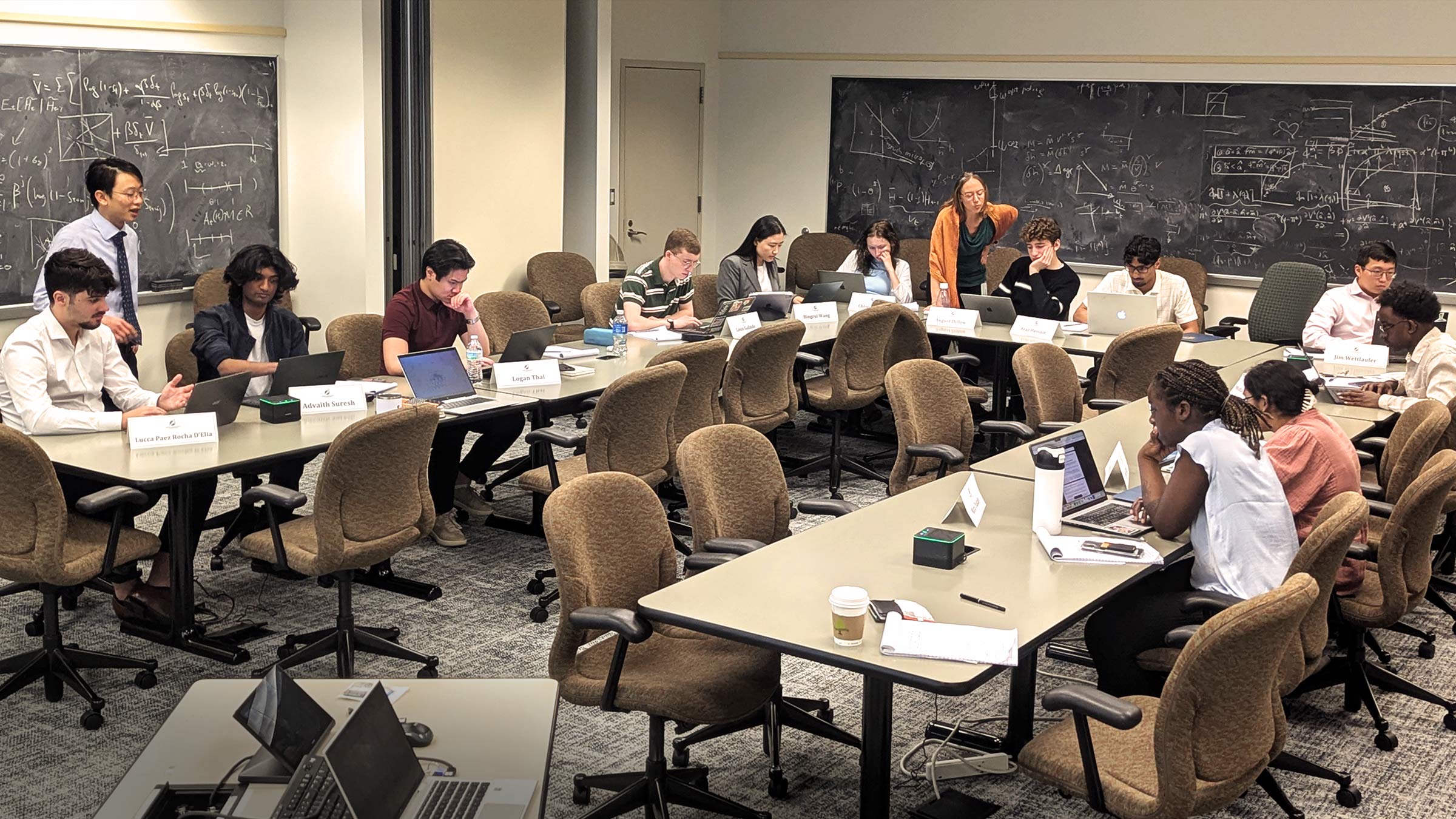When 12 University of Minnesota students arrived at the Federal Reserve Bank of Minneapolis in May of 2025, the Research Division became a hive of collaboration. Economists, research assistants, and colleagues from across the Bank joined forces to host the first full BEE cohort, transforming offices and conference rooms into spaces of discovery and mentorship.
The Broadening Excellence in Economics (BEE) initiative, developed in partnership with the University of Minnesota, is redefining how the Minneapolis Fed engages the next generation of economists.
A joint investment in talent
The Minneapolis Fed and the University of Minnesota, connected by a long history of collaboration, were inspired by a shared goal: to engage students early by reimagining how economics is taught—as a discipline that is both intellectually rigorous and deeply relevant to the real world.
That vision took shape through three experiences that define the BEE model. It begins in the classroom, where a new course at the University of Minnesota invites students to explore economics through data and real‑world questions. The program continues with a hands‑on internship at the Minneapolis Fed, where research and policy meet. It lives on through “the Hive,” a network of mentorship and connection that keeps students engaged, helping them choose classes, explore opportunities, and carry the experience forward in the years that follow.
In the classroom
In spring 2025, more than 60 University of Minnesota students enrolled in Economics at Work: The Wealth of African Nations, a new course co-taught by university faculty and five Minneapolis Fed economists who volunteered their time. Drawing on expertise in inequality, development, international economics, and public policy, they brought the research frontier—and the perspective of policymakers—into the classroom, showing students how economists use data and models to understand economies and inform policy.
The course was an experiment in teaching economics through inquiry, where questions guide the introduction of models as tools for deeper understanding. Students began with data and real policy puzzles, learning how analytical frameworks and evidence can explain growth, inequality, and labor‑market outcomes. Focusing on African economies provided a richness of experience—diverse institutions, histories, and policy environments—that made abstract concepts concrete and revealed how economic tools help make sense of the world.
Facilitators were encouraged by students’ enthusiasm and engagement, so the course will be offered again next year. It will not be listed as a special topics class, but as a regular part of the university’s economics curriculum, carrying forward the same spirit of inquiry that sparked the program’s beginning.
From ideas to experience
For 12 students, the BEE journey continued inside the Minneapolis Fed. The students admitted to this unique internship spent two weeks in the Research Division. Each morning featured lectures from some of the Bank’s most influential economists—leaders in inequality, public finance, international economics, and monetary policy—who shared insights from their frontier research and explained how it connects to policy debates. Students described these sessions as among the most inspiring parts of the program: “The lectures gave us a window into how economists think and what questions really drive the field,” one student said.
Afternoons were devoted to collaborative projects that put theory into practice. Working in small groups under the guidance of research assistants from the Bank, students cleaned and analyzed data, learned new coding and visualization tools, and received feedback as they developed their presentations. “The projects were the best part for me,” another student reflected. “Learning by doing is the best way to understand economics.”
As the projects advanced, the energy on the research floor grew. Economists and research assistants dropped by to check progress or offer advice, and staff across the Bank created an environment where learning and collaboration could thrive. Bank employees coordinated logistics, joined discussions, and celebrated the students’ work at the final presentations. “Everyone we met made time for us,” one student said. “It felt like the entire Bank was invested in our learning.”
On the final day, the students presented their projects to the entire Research Division, including the director. They stood behind podiums used for internal seminars, summarized results, answered questions, and connected their findings to the policy issues they had studied. When it was over, several wished they could stay longer. “I didn’t want it to end,” one student said. “We had just found our rhythm.”
By the end of the two weeks, what began as an internship had become something more—a shared experience of discovery and purpose that captured the spirit of the Fed. For many of the students, it was their first time inside a central bank and an opportunity to see how ideas, data, and policy come together.
Staying connected
The BEE experience did not end when the internship concluded. Through the Hive—a growing network of mentors, alumni, and staff—students remain connected to the economists and research assistants who guided them at the Fed. Many have stayed in touch to ask for advice on courses, research ideas, or graduate school applications, while others returned to campus determined to share what they learned with their peers.
The connections forged through BEE are already growing into a sustained community. Earlier this fall, several BEE interns returned to the Bank for a seminar with research assistants and prospective students—a chance to reconnect, share experiences, and reflect on how the program shaped their paths. The gathering captured the community of learning and mentorship that BEE set out to build.
By inspiring talented students and showing how economics connects to real-world challenges, BEE builds lasting connections that enrich the profession and strengthen policymaking over time.






